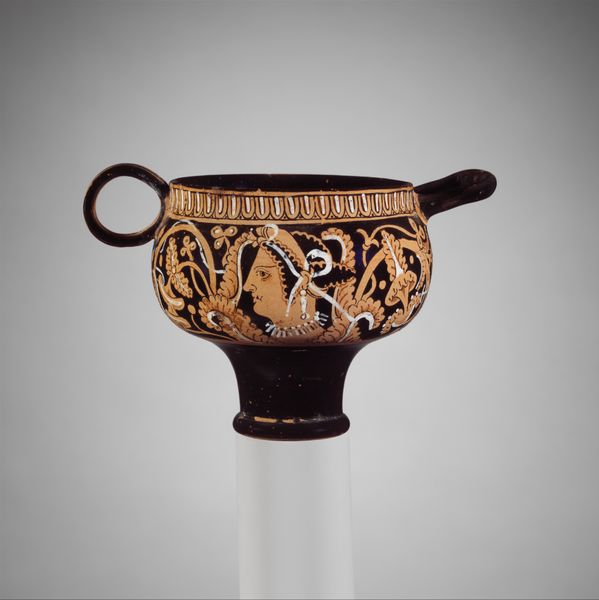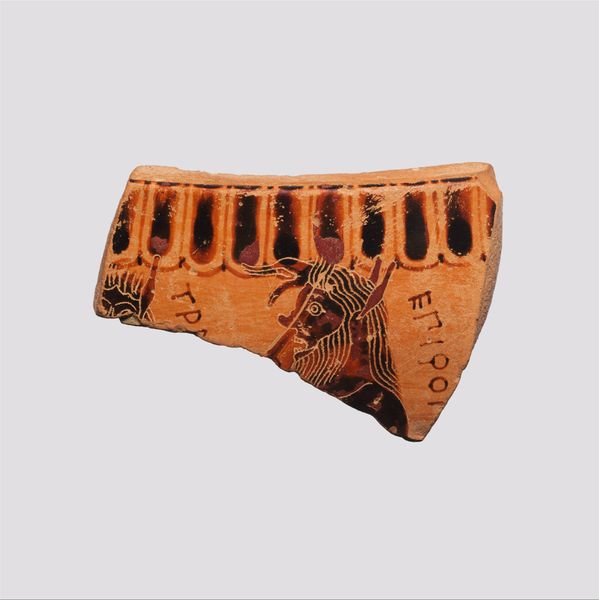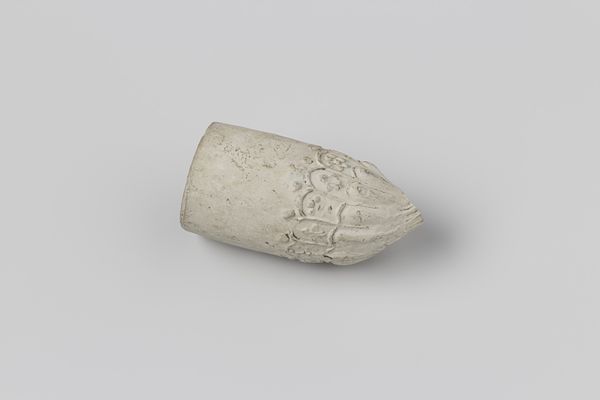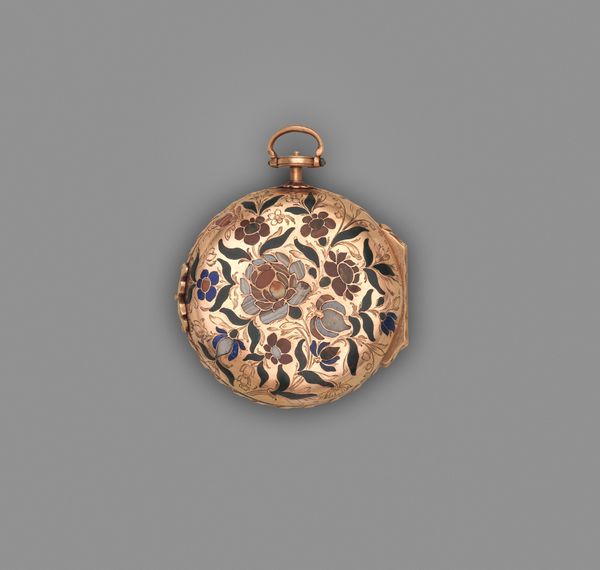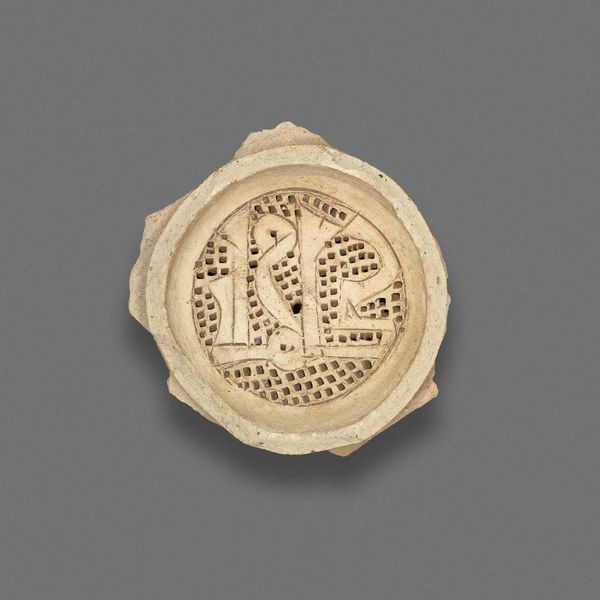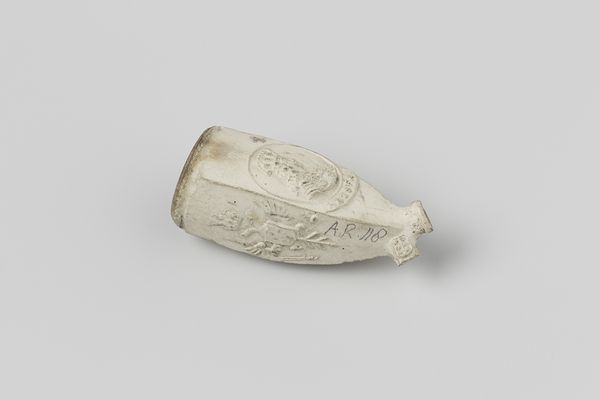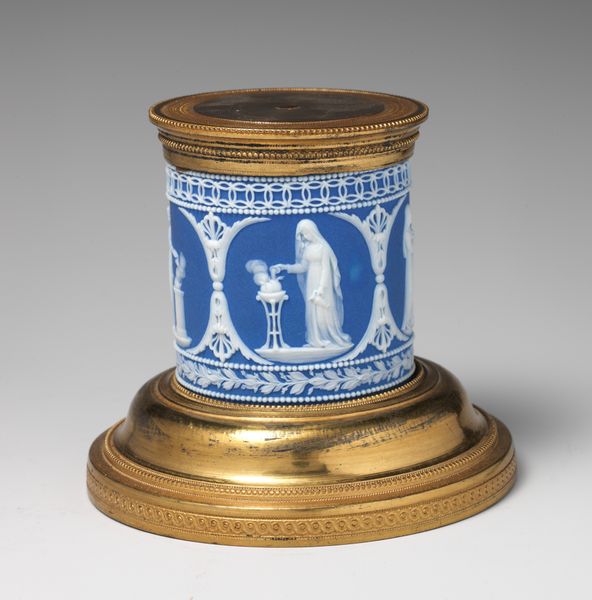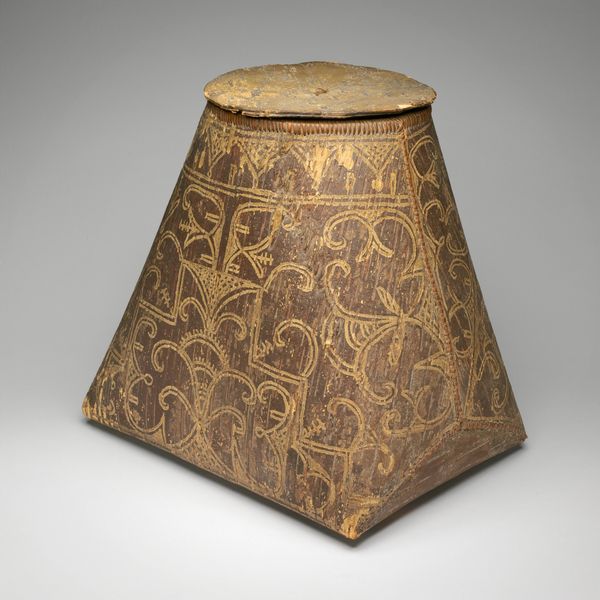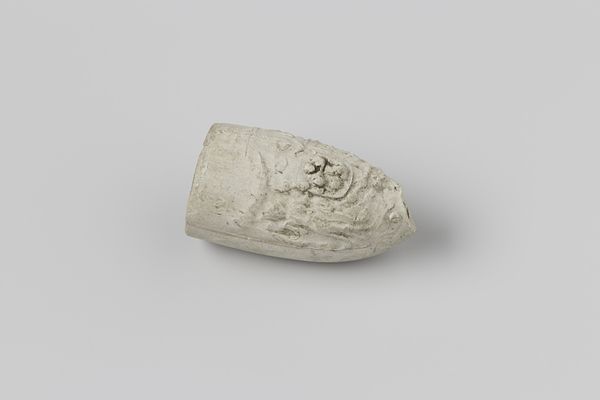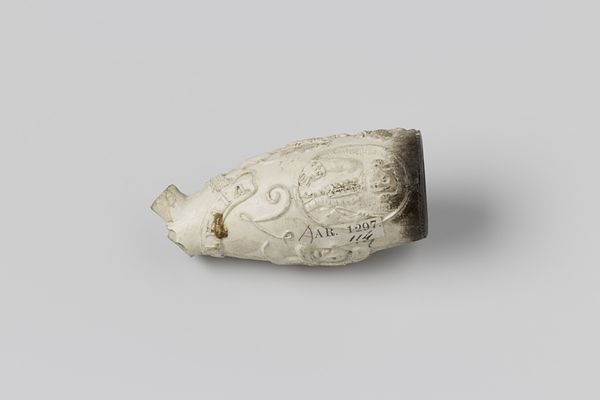
drawing, ceramic
#
drawing
#
greek-and-roman-art
#
ceramic
#
bird
#
vase
#
figuration
#
roman-art
#
geometric
#
horse
Dimensions: H. 6 9/16 in. (16.7 cm)
Copyright: Public Domain
Editor: So, here we have a fragment of a terracotta jug, called an oinochoe, dating back to 750 BC. It’s currently at the Metropolitan Museum of Art. The piece is decorated with geometric patterns and some animal figures. What strikes me most is the presence of the horse, along with a bird perched on its back, despite its fragmentary state, the scene remains surprisingly intact. What do you make of it? Curator: It's remarkable how this fragment allows us to engage with early Greek artistic expression. Beyond the visual, think about the broader context: the late Geometric period. The stylized representation of animals and geometric patterns tells a story about early Greek identity formation. The depiction of animals could have symbolized power, status, or even served as a narrative element, perhaps connected to myths or societal rituals. Who was crafting these vessels? What purpose did they serve in their everyday life? Editor: That’s a good point. So, this isn’t just decoration. The figures and geometric motifs were important visual signifiers in their culture. Are you suggesting the image might represent more than meets the eye? Perhaps a symbol of wealth? Curator: Absolutely. The horse itself carried connotations of aristocracy and martial prowess in ancient Greece, whereas the presence of a bird might hint at a divine association, conveying ideas of power, communication, or even transformation. It is also important to realize that, being a fragment, the complete narrative may forever elude us, reminding us of the inherently partial nature of historical understanding. Editor: I hadn't considered that the narrative itself could be lost to time. The missing part of the vessel leaves us wondering what stories this jug held. Curator: Indeed. It challenges us to move beyond surface-level appreciation and engage with the historical, cultural, and even philosophical implications embedded within the art. What can a fragment tell us about the whole? Editor: Well, I now see this piece as more than just a broken piece of pottery! It's a glimpse into early Greek life and values, albeit a partial one.
Comments
No comments
Be the first to comment and join the conversation on the ultimate creative platform.

